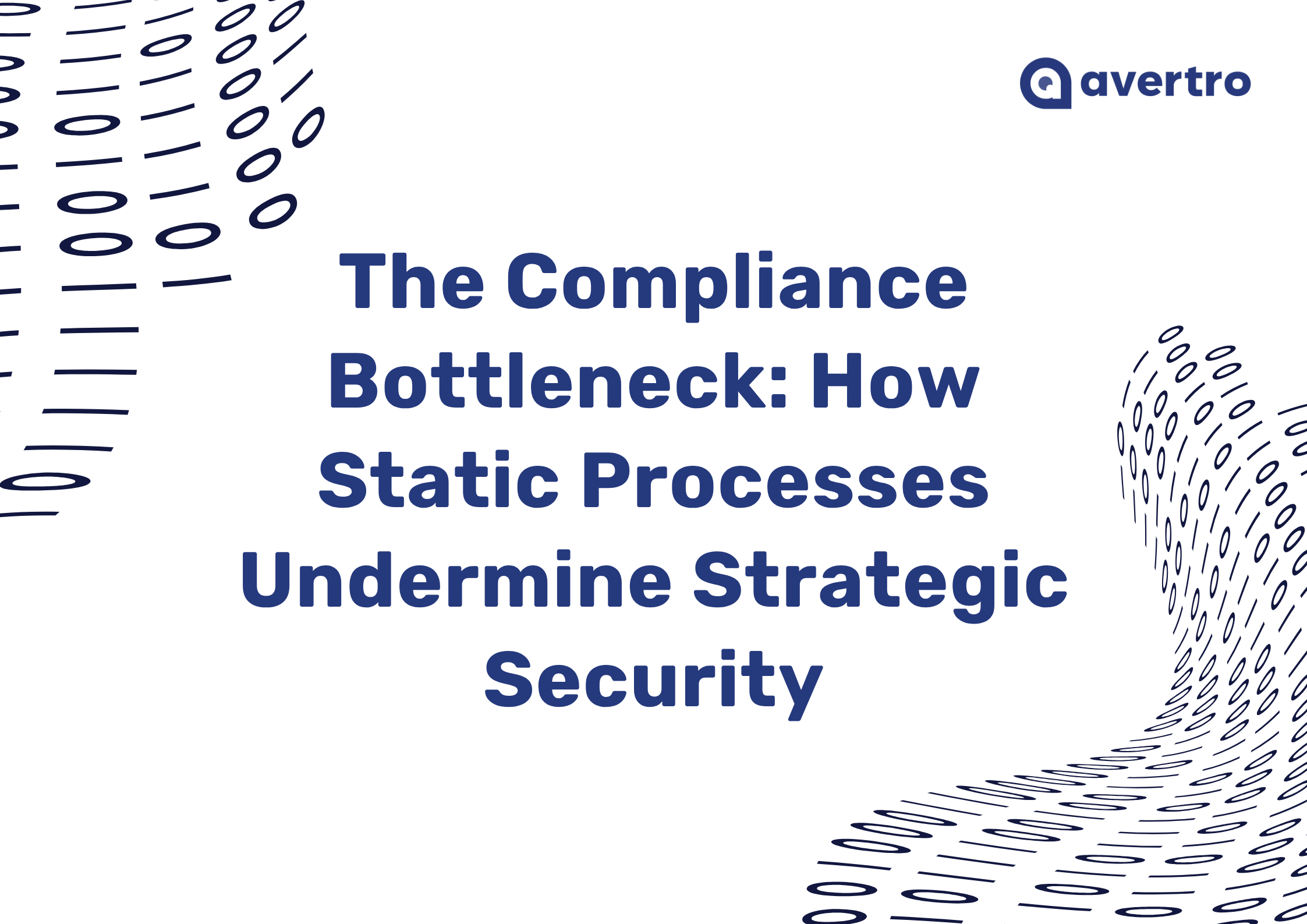August 6, 2025
The Compliance Bottleneck: How Static Processes Undermine Strategic Security
Stale data. Manual tasks. Misaligned reporting. It’s time to rethink compliance for a faster, more informed GRC future.
Stale data. Manual tasks. Misaligned reporting. It’s time to rethink compliance for a faster, more informed GRC future.

As regulatory expectations increase and threat environments evolve, compliance continues to play a central role in how organisations manage risk. But while the frameworks and obligations have matured, many of the processes used to manage them haven’t kept pace.
Spreadsheets. Siloed systems. Periodic reporting cycles.
These long-standing practices often create an invisible bottleneck, slowing down decision-making, limiting visibility, and placing added strain on security and risk teams already under pressure to do more with less.
It’s not a failure of strategy. It’s a sign that the way compliance is managed must evolve.
Disconnected Compliance Date, Disconnected Insight
For many organisations, compliance remains a retrospective activity, checked off quarterly or annually in response to external requirements. But today’s landscape demands more. Threats move quickly. Expectations shift rapidly. Static processes weren’t designed for this pace.
Static compliance data, manually pulled, infrequently updated, and disconnected from live systems, doesn’t reflect current risk. It shows what was true weeks or even months ago. In practice, this means teams are left reacting to problems without a current view of their environment.
This lack of real-time visibility carries real consequences:
What was once a necessary administrative function is now creating blind spots and constraining agility across the organisation.
Without timely, centralised compliance data, leaders lack the clarity needed to quantify risk, track effectiveness, or demonstrate the business value of controls. This makes it harder to build investment cases, prioritise initiatives, or deliver credible, forward-looking reports to the board.
In short, what should be a source of insight becomes a source of uncertainty, slowing momentum at the very moment organisations need to move decisively.
More organisations are recognising the need to shift from reactive compliance to a model that informs broader risk and business decisions. This shift is at the heart of what’s becoming known as Informed Cyber GRC, a more dynamic, intelligence-led approach that positions compliance as a source of continuous insight, not just retrospective reporting.
By embedding compliance into a real-time, integrated GRC approach, security and risk leaders gain:
The result isn’t just better reporting, it’s smarter decision-making, supported by timely, trustworthy data the business can act on.
For organisations looking to move beyond reactive, checklist-driven compliance, the path forward starts with automation. Establishing automated compliance processes lays the foundation for better visibility, stronger alignment, and more informed decision-making.
Here are four key considerations to guide that journey:
1. Start by automating the fundamentals: Manual workflows, duplicated effort, and reporting delays are often the clearest signs of a process ready for change. Automating evidence collection, control tracking, and regulatory mapping is the first step in unlocking more efficient, scalable compliance.
2. Replace static reports with real-time visibility: Once automation is in place, live dashboards and automated updates provide a more accurate picture of current compliance posture, improving responsiveness and reducing reporting overhead.
3. Connect compliance with business context: As data becomes more dynamic, translate compliance obligations into operational and financial impact. This helps align GRC activity with business goals and supports more effective communication with executive stakeholders.
4. Build toward continuous improvement: Modern GRC is iterative. With automation and visibility in place, your organisation can evolve toward a more responsive, risk-informed model, one that adapts in real time and supports long-term resilience.
As businesses work to improve resilience, increase transparency, and operate at speed, static compliance practices can quietly hold them back. Modernising these systems isn’t just a technology upgrade, it’s a strategic shift.
One that turns compliance from an overhead into an enabler.
That’s where CyberHQ comes in.
Schedule a meeting to explore how CyberHQ can help you move beyond static compliance and unlock a more informed approach to risk
Experience the power of a connected, automated platform that empowers you to Simulate Attack Paths, Automate Compliance, and Quantify Risk centrally.
